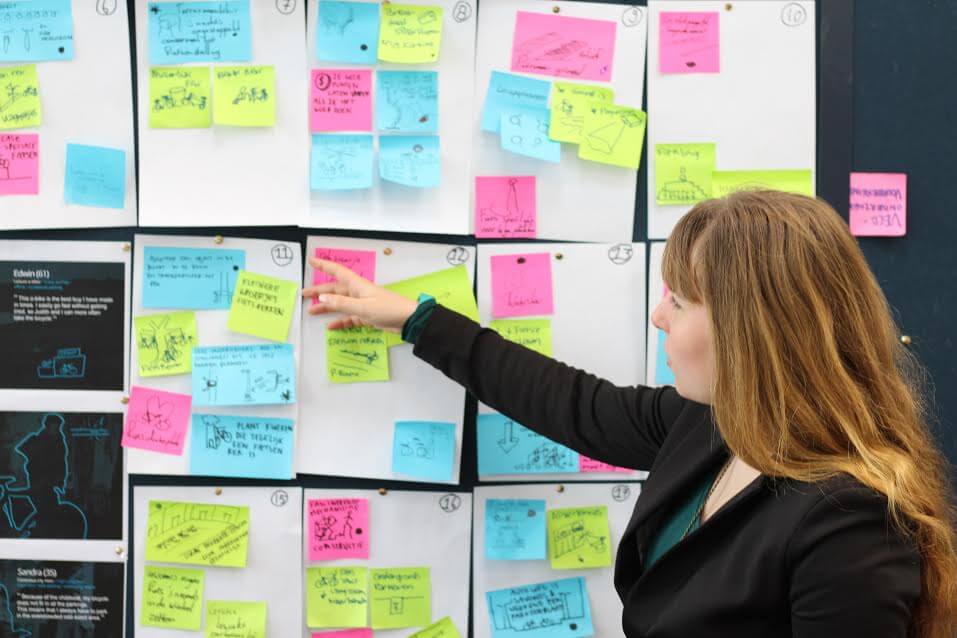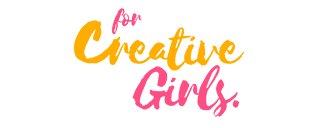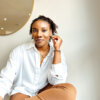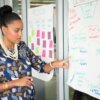Marieke Lous is a UI/UX Designer with the fascinating Instagram handle – girl_ux. We got really interested in her handle and went a-stalking. She is a fantastic UX designer, creating and hacking digital products and sharing her work/thought process along the way.
Here we chat with her and ask her a couple of questions. 
For Creative Girls: We are curious, what was the first experience that drew your heart to Design?
I think my first interest in design started in high school. I did a mandatory course on arts and they discussed what they called “applied arts”, which is basically design. I decided I wanted to design stuff that people actually use, not just something that is nice to look at.
Describe your path to where you are now as a UI/UX Designer. What tools do you use every day to map out and design experiences?
After high school, I went to the Delft University of Technology to study industrial design engineering. During my Bachelor’s degree, every aspect of product design was addressed, and I realized I had the most fun in designing interfaces.
After getting my bachelor’s degree I continued on to get my Masters in Design for Interaction. During my masters, I learned a lot about UX and UI design, but I also spent a lot of my free time reading about these topics, learning how to code and practicing designing digital products.
I had to re-take one of my courses before I could start my graduation project, and got an amazing opportunity to work as a UX designer three days a week. I learned a lot from working there, but mainly that UX/UI design really is my passion!
Currently, I am doing my graduation project at a hospital, where I am designing a digital tool to help doctors correctly diagnose allergies.
I am pretty much an Adobe fangirl. I use illustrator, photoshop, InDesign and experience design in most projects I do. Over time I have gotten pretty quick in using these programs and use a lot of shortcuts without thinking.
https://www.instagram.com/p/BVt3cAqHFxh/?taken-by=girl_ux
We asked a Designer friend of ours how she was able to cope with the unforgiving world of design as a beginner. What are your thoughts? Isn’t it very scary at first? How does a beginner cope with experienced designers tearing their work apart?
I think a lot of beginners (and maybe even senior designers) suffer from the imposter syndrome, where you feel like an imposter because you don’t always know what you are doing. It’s important to be in the right environment. If you are constantly scared of getting judged and only work to please your boss, you’re not going to be able to deliver your best work. There will be times when your ideas are all shot down and torn apart, and you have to learn to not take it personally. Having the right people around you really helps with this.
How do you then define creativity?
Creativity for me is being able to make something that is simple, smart and original. In UX, simplicity is key as you don’t want to make users think too much. Fewer steps and clean interfaces reduce the cognitive load for the user. As you don’t want to leave out necessary functions or information, smart structuring elements are crucial. Being original makes you stand out. You won’t make money from designing a product that has nothing new to offer. You will just blend in among several similar products.
What’s your process/framework for approaching a new design or product?
My process depends a bit on the type of project and the timeframe available, but mostly it consists of three phases. The first one is analysis. Here I find out what exactly the problem is that needs to be solved, who the users and other stakeholders are and what their needs are. I try to make my findings as visual as possible creating timelines, user journey maps, persona’s et cetera. From these findings, I formulate a design goal; what exactly needs to be designed.
The second phase is ideation. Brainstorming about possible solutions, sketching and making mock-ups. In this phase user input is also important. Sometimes I do co-design sessions where the user comes up with their own ideas about how the product should function and how it should look like. Developing and testing different concepts is also a part of this phase.
The final phase is detailing. Every aspect of the product is worked out and finalized and tested.
What are your favorite projects?
For me, the most fun projects are the ones where I work together with a great team. It sounds cliché, but when you have a team where everyone knows each other’s strengths and trusts each other to do a great job, you work best and lead to the best results. I have worked with design teams that spend a lot of time discussing things that were previously already agreed upon earlier, or where people let personal issues with other team members affect their decisions.
The best projects are the ones where each team member has confidence in themselves and each other that they will do an amazing job.
What does every day look like for you? Do you have a daily routine?
I do not really have a set routine for each day, but I like to start the day as relaxed as possible. I hate having to rush in the morning so I take some extra time to sit down for breakfast and have a mindful moment before I have to leave the house.
My working days usually start with getting an overview of what I have to do that day. To do lists play an important role in keeping my life organized.
My peak of productivity lies at the end of the morning/beginning of the afternoon so I try to plan the most challenging tasks at that timeframe if possible.
Tell us about 3 women you admire.
I know many women that battle mental illness every day that I admire very deeply, but if I have to name one it would be Kenza Bolsius. She’s a beautiful young woman from Amsterdam that not only fights very hard every day to battle her own demons but inspires others to keep on fighting. Despite all that is going on in her own life, she has built a platform (Strong Like a Fighter) for other people with trauma’s, ptsd or mental illness to share their stories and find support. Kenza inspires me to keep looking at the positive things in life, even when everything seems to be going wrong.
The second lady I admire is my close friend Anna Lena. She’s also a UX designer, and she makes really cool drawings. She even started her own company to earn money with her passion. Anna Lena knows what she wants and works very hard to get it.
The third woman I like to mention here is Mileha Soneji. She’s a designer who designed simple tool to help people with Parkinson’s disease in their daily life. She did TED talks about the important role of empathy in design. Her ideas have been featured all over the internet. It’s inspiring to see such a powerful woman in the design world doing what she loves.
You should follow this interview up with other interviews in our Women in UX Design series.





